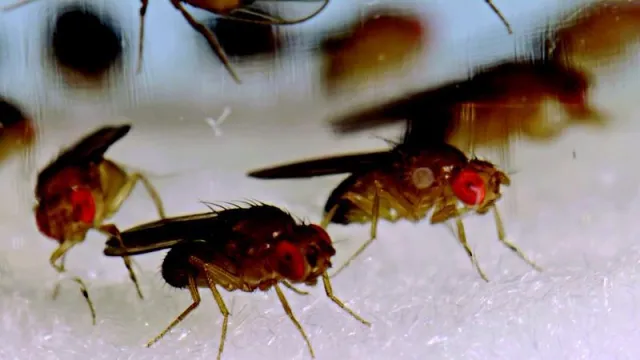(openPR) Mainz-based physicists use mathematical algorithms to examine experimental 3D structures of chromosomes
---
Everyone knows that long bits of yarn, or charging cables and the like, tend to get quickly tangled and form nasty knots. Little is known about the structures of our genetic material, chromosomes, which also consist of long strings that—according to our experience—should be likely to become knotted. However, up to now it has not been possible to study this experimentally.
Researchers at Johannes Gutenberg University Mainz (JGU) in Germany have now found that chromosomes may indeed be knotted. "We used mathematical algorithms to examine 3D polymer models of chromosomes that colleagues from Cambridge University had generated from experimental data," reported Dr. Peter Virnau of the JGU’s Institute of Physics. "It has not previously been possible to determine whether chromosomes are actually knotted because there is insufficient knowledge of their exact three-dimensional structure. But using the chromosome models published by the specialists in Cambridge, we found that they were entangled."
For their calculations, the physicists in Mainz utilized the 3D chromosome models that were published in the spring of 2017 [1]. The Mainz team extended these models at both ends and then linked them together as it is only possible to subject closed rings to mathematical analysis to see if they contain knots. "Just imagine grabbing both ends of the chromosome and pulling them together," explained Virnau. The researchers then employed special mathematical algorithms to examine the extended model.
The research team at Mainz University speculates that whilst entanglements between chromosomes need to be removed for cell cycle progression those within a chromosome may not affect function and transmission of genetic information. There are also certain protein strings that have complicated knots, something that experts in the past would have found surprising. And even the DNA in viruses that attack bacteria, so-called bacteriophages, is knotted. While the knots in these special proteins seem to always form in the same position, they appear to occur randomly in the case of the viruses. Dr. Peter Virnau speculates the same could also be true in chromosomes.
The team in Mainz is unable to say as yet whether their results are an artifact of the simplicity of the polymer models used to represent chromosome structures, or whether they indeed indicate the real form of chromosomes. Nevertheless, the calculations undertaken in Cambridge and Mainz suggest that chromosomes may be knotted.
[1] J.T. Stevens et al, 3D structures of individual mammalian genomes studied by single-cell Hi-C. Nature 2017, 544, 59–64.
Publication:
Jonathan T. Siebert et al.
Are There Knots in Chromosomes?
Polymers, 2 August 2017
DOI:10.3390/polym9080317
http://www.mdpi.com/2073-4360/9/8/317
Image:
http://www.uni-mainz.de/bilder_presse/08_physik_komet_knoten_chromosomen.jpg
Researchers at Mainz University found two knots in chromosome 14, here indicated by the solid lines. The blue and red dots mark the beginning and end of the chromosome. The coloring used in the image is designed to help with orientation only.
Ill./ ©: Jonathan Siebert, JGU
Further information:
Dr. Peter Virnau
Condensed Matter Theory Group
Institute of Physics
Johannes Gutenberg University Mainz
55099 Mainz, GERMANY
phone +49 6131 39-20493
fax +49 6131 39-20496
e-mail:
http://www.komet331.physik.uni-mainz.de/virnau.php
Related links:
http://www.komet331.physik.uni-mainz.de/ – Statistical Physics and Soft Matter Theory: KOMET 1/2
http://www.uni-mainz.de/presse/17448_ENG_HTML.php – press release "How knots can swap positions on a DNA strand" (3 July 2014)
http://www.uni-mainz.de/presse/17392_ENG_HTML.php – press release "Active particles may enhance phase separation" (12 June 2014)
http://www.uni-mainz.de/presse/17291_ENG_HTML.php – press release "Improved computer simulations enable better calculation of interfacial tension" (20 May 2014)
Quelle: idw






